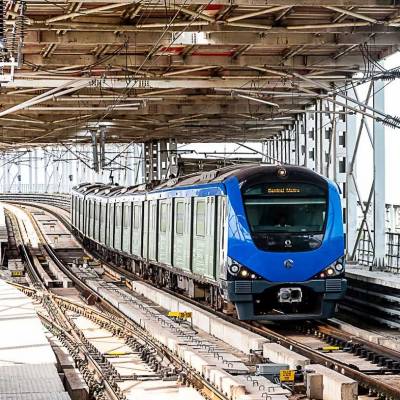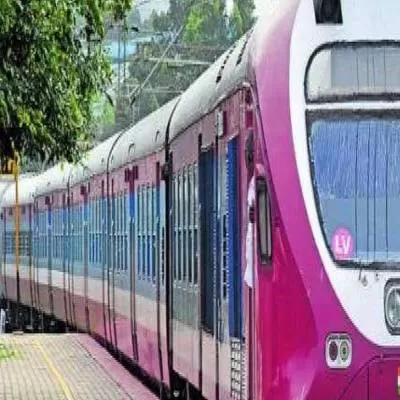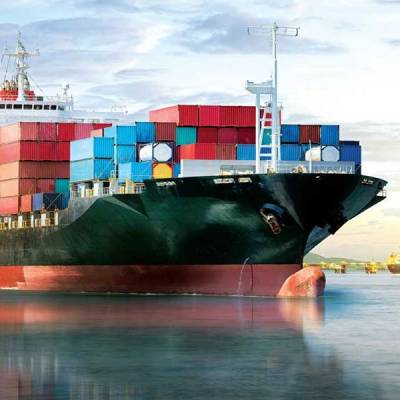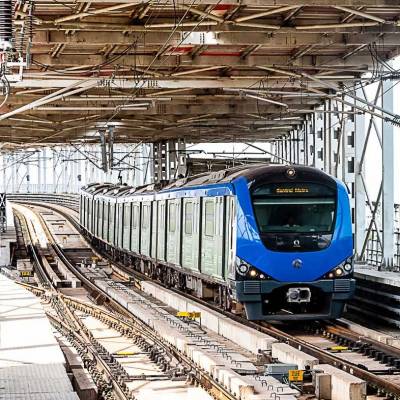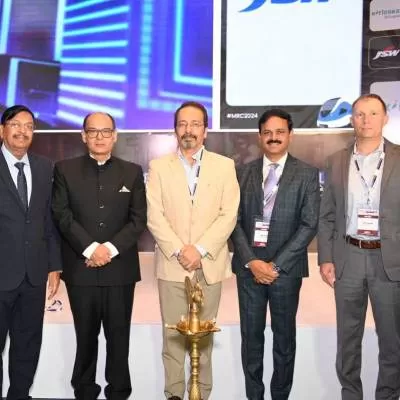- Home
- Infrastructure Transport
- RAILWAYS & METRO RAIL
- Need for Speed
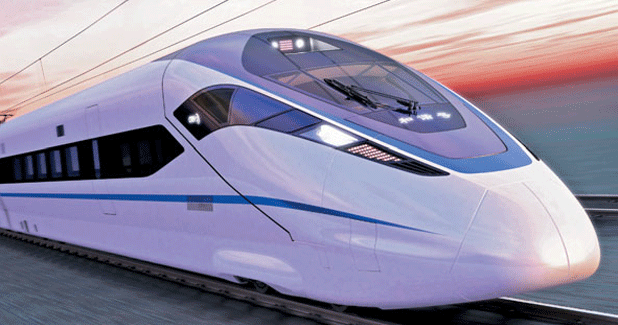
Need for Speed
The requirements imposed by a rapidly growing country both economically and population-wise, fuel a demand for shorter delivery times and faster movement. Customers across the Indian market have come of age as their choices have matured and preferences are changing fast, stimulated by a concurrent increase in product choices.
Terms of transport
The transport industry, too, is in a state of flux. As fuel prices fluctuate, the preference for air and road transportation is gradually changing. The climatic implications and dangers of our existing transport model based on an economy driven primarily by automobiles and aircrafts is leading to a wider spread of transport options, largely including rail transportation. Rapid urbanisation across the country has also led to an explosion in inter-city travel. There is a growing demand for intercity transport between not only metros, but Tier-II and Tier-III cities as well. While the bus transport systems have definitely benefited from this, it is a great opportunity for the railways to capitalise on.
It is imperative that the key issues of transport are addressed in a way that helps improve ecological standards and protect the environment at large. The transport industry in India is now under a scanner with regards to issues concerning environmental standards and sustainability.
The use and application of rail transportation solutions are an answer to this particular problem as rail transportation accounts for only 1 per cent of the world´s CO2 emissions.
While the concern with rail transport in India has always been the inordinately long hours that it takes to cover distances, the proposed solution to introduce high-speed trains could have distinct long term benefits. For travellers, it would save time, and for the railways, it would translate into improved product offerings, fuel-efficiency and increased revenues. High-speed rail travel has become the epitome of efficient land transportation worldwide, beginning to rival even air transportation as an efficient means of covering long distances within a short span of time.
Speeding it up
The Indian Railways are already making strides in the direction to introduce these trains in India and proposals have been drawn up for nine high-speed train corridors, among several others. But there are still some important concerns that need to be dealt with in order to make the high-speed train dream a reality.
The most pertinent among these is the issue of safety and security. High-speed trains require the tracks to be fenced and clear of any obstruction - a definite challenge in the Indian scenario. While the accident rate of train collisions has reduced over time, stronger efforts will be needed to curb them completely in order to avoid major mishaps with high-speed trains that have a travel speed of up to 300 km per hour. The areas near the tracks would need to be cleared of any housing settlements and the signalling systems, too, would have to be aligned to be compatible with cutting-edge technology.
If the Indian Railway authorities could tackle these issues in a serious and dedicated manner, the possibilities within the high-speed train realm are endless.
Overall, high-speed trains are a safe travel option, providing passengers with a better ambience, world-class comfort and a stress-free journey. The comparatively shorter transit times are combined with an unmatched punctuality and the reduced energy consumption translates into fewer harmful air pollutants. Importantly, high-speed rail services require less land acquisition than most other modes of travel.
Equipped with state-of-the-art signalling and train control systems, these trains will be able to cover distances of up to 600 km in just two to three hours. This mode of transport would lead to faster inter-regional connectivity linking industrial clusters, urban conglomerations and growth centres providing an integral infrastructural support to these regions, thereby easing the pressure on civic services in the metros by aiding growth of satellite towns.
While high-speed rail travel is the norm of rail transport worldwide, it heralds the future in India. And if the railway authorities are able to overcome the security and operational challenges, it presents a whole new era for rail transport in India that is more efficient, economical and an environment-friendly mode of transportation.
Leading the brigade
Bombardier is one of the major suppliers of high speed trains across the world, having delivered more than 900 high speed trains globally, and we are delighted with the prospects of new high speed routes across the nine corridors. Bombardier created the Zefiro - a radically new definition of very high speed (VHS) rail travel. It sets benchmarks in high performance, efficiency and dedication. Although Zefiro is one of the world´s fastest VHS trains with a maximum operating speed of 380 km per hour and a sleeper version that reaches 250 km per hour, it also offers customised comfort, smart design and operational flexibility.
The Zefiro portfolio features the world´s most economical and eco-friendly VHS trains. Further, Bombardier has special expertise in aerodynamic design, and this skill has been applied to Zefiro to achieve better efficiency and overall train performance in terms of speed, safety and noise reduction. Zefiro was designed with the economics of high-speed rail in mind and, as such, it can maximise revenue generation for the train operator, high capacity, low operational cost, and the versatility of its utilisation in different countries and at different speeds are key features. Today, our high speed trains are operating across the world in China, Europe, etc.
Let´s hope that the rail authorities and the new government under the leadership of Prime Minister Narendra Modi can make our dreams of travelling in high-speed trains in India come true.
About the Author:
Harsh Dhingra, Chief Country Representative, India, Bombardier Transportation, is with the company since October 2010. An electrical engineer with a marketing management background, he has around 20 years of experience in rail transportation and is playing a key role in transforming the rail transportation sector in India.
HARSH DHINGRA reveals the reasons that put Indian rail transport on the map of global high-speed trains. The requirements imposed by a rapidly growing country both economically and population-wise, fuel a demand for shorter delivery times and faster movement. Customers across the Indian market have come of age as their choices have matured and preferences are changing fast, stimulated by a concurrent increase in product choices. Terms of transport The transport industry, too, is in a state of flux. As fuel prices fluctuate, the preference for air and road transportation is gradually changing. The climatic implications and dangers of our existing transport model based on an economy driven primarily by automobiles and aircrafts is leading to a wider spread of transport options, largely including rail transportation. Rapid urbanisation across the country has also led to an explosion in inter-city travel. There is a growing demand for intercity transport between not only metros, but Tier-II and Tier-III cities as well. While the bus transport systems have definitely benefited from this, it is a great opportunity for the railways to capitalise on. It is imperative that the key issues of transport are addressed in a way that helps improve ecological standards and protect the environment at large. The transport industry in India is now under a scanner with regards to issues concerning environmental standards and sustainability. The use and application of rail transportation solutions are an answer to this particular problem as rail transportation accounts for only 1 per cent of the world´s CO2 emissions. While the concern with rail transport in India has always been the inordinately long hours that it takes to cover distances, the proposed solution to introduce high-speed trains could have distinct long term benefits. For travellers, it would save time, and for the railways, it would translate into improved product offerings, fuel-efficiency and increased revenues. High-speed rail travel has become the epitome of efficient land transportation worldwide, beginning to rival even air transportation as an efficient means of covering long distances within a short span of time. Speeding it up The Indian Railways are already making strides in the direction to introduce these trains in India and proposals have been drawn up for nine high-speed train corridors, among several others. But there are still some important concerns that need to be dealt with in order to make the high-speed train dream a reality. The most pertinent among these is the issue of safety and security. High-speed trains require the tracks to be fenced and clear of any obstruction - a definite challenge in the Indian scenario. While the accident rate of train collisions has reduced over time, stronger efforts will be needed to curb them completely in order to avoid major mishaps with high-speed trains that have a travel speed of up to 300 km per hour. The areas near the tracks would need to be cleared of any housing settlements and the signalling systems, too, would have to be aligned to be compatible with cutting-edge technology. If the Indian Railway authorities could tackle these issues in a serious and dedicated manner, the possibilities within the high-speed train realm are endless. Overall, high-speed trains are a safe travel option, providing passengers with a better ambience, world-class comfort and a stress-free journey. The comparatively shorter transit times are combined with an unmatched punctuality and the reduced energy consumption translates into fewer harmful air pollutants. Importantly, high-speed rail services require less land acquisition than most other modes of travel. Equipped with state-of-the-art signalling and train control systems, these trains will be able to cover distances of up to 600 km in just two to three hours. This mode of transport would lead to faster inter-regional connectivity linking industrial clusters, urban conglomerations and growth centres providing an integral infrastructural support to these regions, thereby easing the pressure on civic services in the metros by aiding growth of satellite towns. While high-speed rail travel is the norm of rail transport worldwide, it heralds the future in India. And if the railway authorities are able to overcome the security and operational challenges, it presents a whole new era for rail transport in India that is more efficient, economical and an environment-friendly mode of transportation. Leading the brigade Bombardier is one of the major suppliers of high speed trains across the world, having delivered more than 900 high speed trains globally, and we are delighted with the prospects of new high speed routes across the nine corridors. Bombardier created the Zefiro - a radically new definition of very high speed (VHS) rail travel. It sets benchmarks in high performance, efficiency and dedication. Although Zefiro is one of the world´s fastest VHS trains with a maximum operating speed of 380 km per hour and a sleeper version that reaches 250 km per hour, it also offers customised comfort, smart design and operational flexibility. The Zefiro portfolio features the world´s most economical and eco-friendly VHS trains. Further, Bombardier has special expertise in aerodynamic design, and this skill has been applied to Zefiro to achieve better efficiency and overall train performance in terms of speed, safety and noise reduction. Zefiro was designed with the economics of high-speed rail in mind and, as such, it can maximise revenue generation for the train operator, high capacity, low operational cost, and the versatility of its utilisation in different countries and at different speeds are key features. Today, our high speed trains are operating across the world in China, Europe, etc. Let´s hope that the rail authorities and the new government under the leadership of Prime Minister Narendra Modi can make our dreams of travelling in high-speed trains in India come true. About the Author: Harsh Dhingra, Chief Country Representative, India, Bombardier Transportation, is with the company since October 2010. An electrical engineer with a marketing management background, he has around 20 years of experience in rail transportation and is playing a key role in transforming the rail transportation sector in India.


